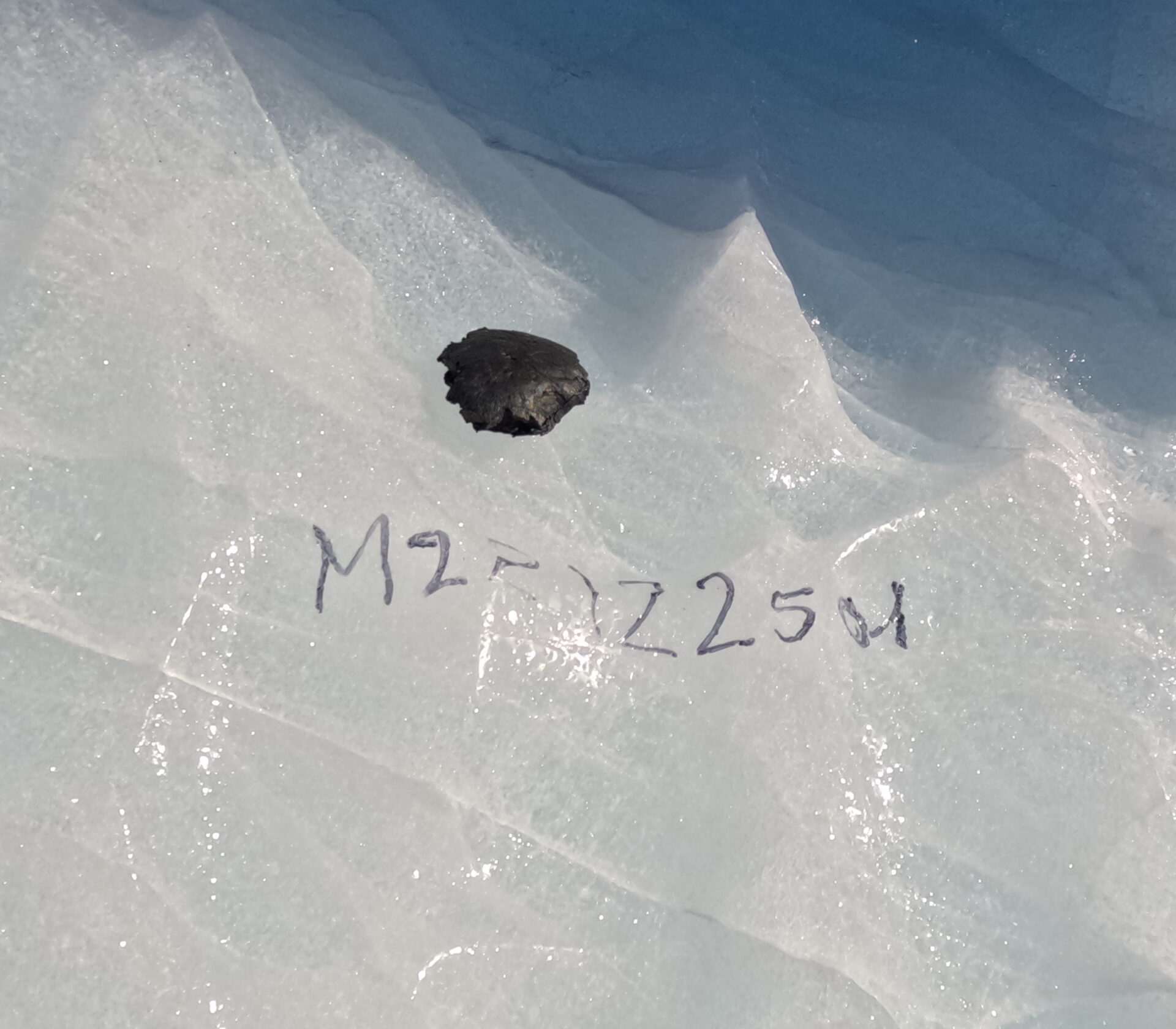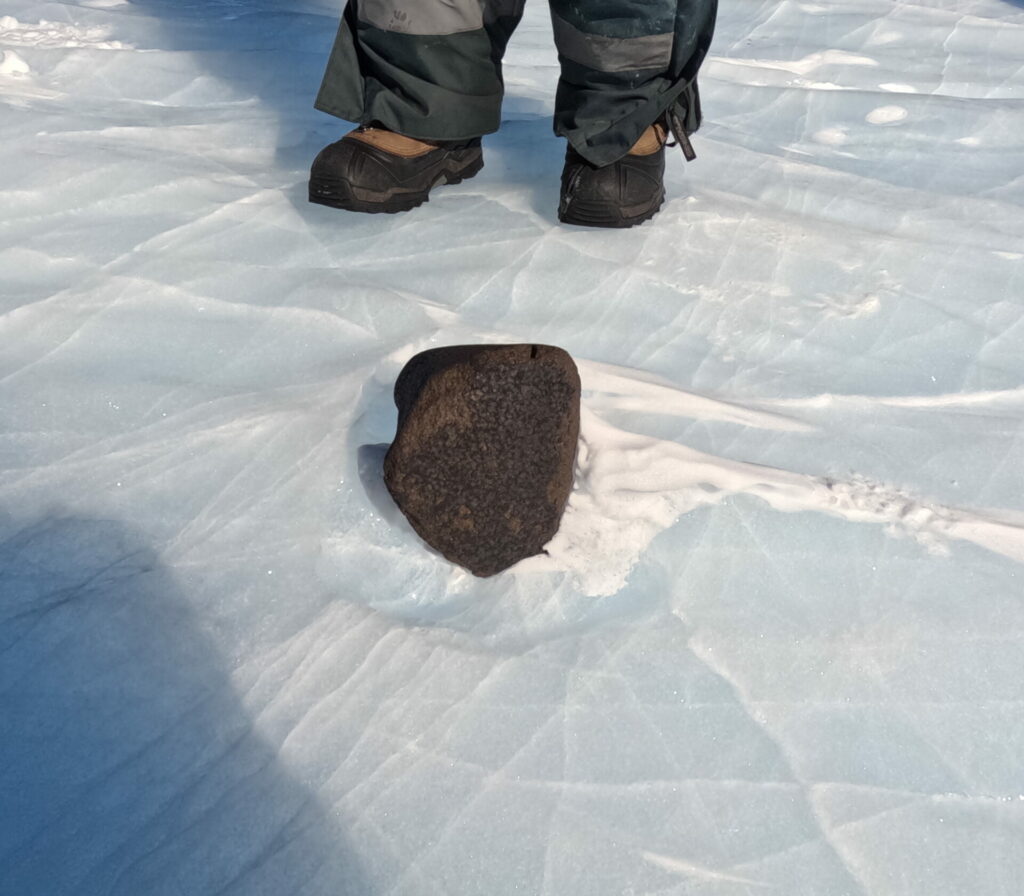An international team of scientists from two Brussels universities recently returned from an expedition in Antarctica with a remarkable find – a meteorite.
The team, led by the French-speaking ULB's Vinciane Debaille and Dutch-speaking VUB's Ryoga Maeda, has been searching for accumulation areas of meteorites and micrometeorites in the wide vicinity of the Princess Elisabeth Antarctica Station, a Belgian scientific polar research station located on Utsteinen Nunatak in Queen Maud Land for several years.
Using satellite images and GPS coordinates, Veronica Tollenaar, a PhD student in glaciology at ULB, predicted where the expedition members had the best chances of finding meteorites. The team then set out to discover the potential of several areas of interest.

The team searching for meteorites in moraine, which is formed by the movement of glaciers. Credit: Ryoga Maeda
"However, we also had to deal with the fact that the reality on the ground is much more difficult than the beauty of the satellite images," Tollenaar noted. Despite these challenges, the first results of the expedition include the discovery of a hefty meteorite.
"The most impressive find in the area is a meteorite, one weighing 7.6 kg," said Maeda. "The object comes from the asteroid belt and probably plopped down into the Antarctic blue ice several tens of thousands of years ago." According to Maeda, it is an "ordinary chondrite", and the meteorite contains a lot of metal (H-type).
Available for further research
All collected meteorites will now thaw properly under controlled conditions in the laboratory of the Royal Belgian Institute of Natural Sciences." After that, they will be analysed for their chemical composition and made available to the scientific community for further research," Maeda said.
During the mission, the team camped at temperatures of -10°C, covered dozens of kilometres over sastrugi — wind-hardened snow dunes — and lived by the sound of snowmobiles.

The first meteorite found by the team during the mission. Credit: Ryoga Maeda
The team was able to draw on the experience of Belgian explorer Alain Hubert, who knows the region well and was able to open roads to avoid dangerous areas. They explored the Nils Larsen blue ice zone, about 60 kilometres from the station, and were able to conclude that, as predicted, it is an effective accumulation zone for meteorites, which requires further investigation.
Related News
- Researchers discover two new minerals in massive meteorite
- Belgian-Dutch team map meteorites in Antarctica
More than 600 meteorites have been collected in the past during three VUB-ULB-NIPR (National Institute of Polar Research) missions to the Nansen Blue Ice Field.

